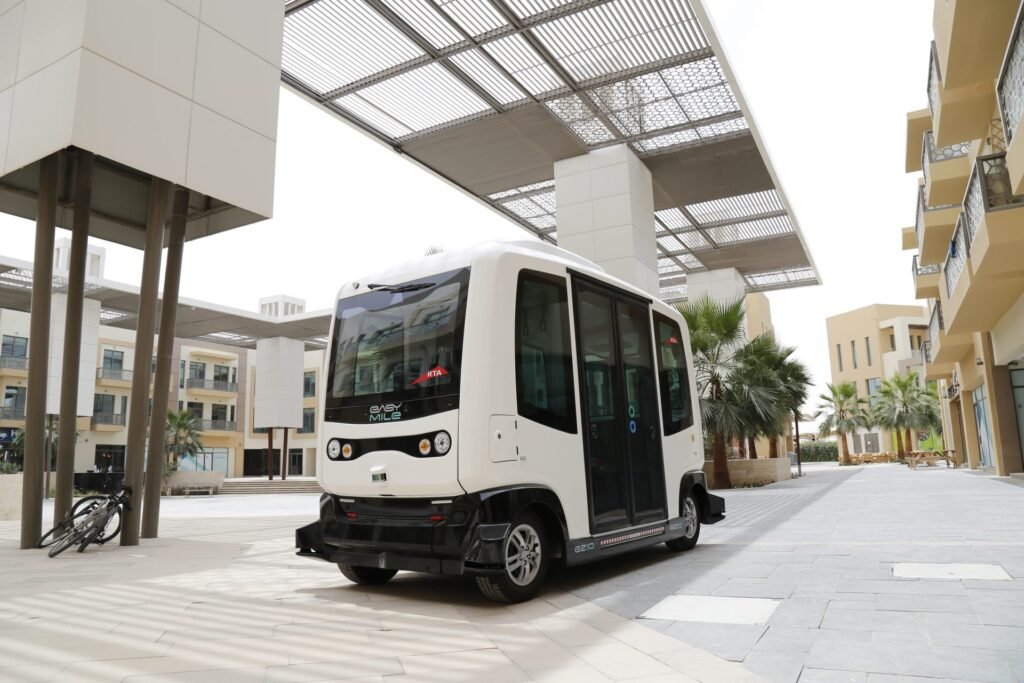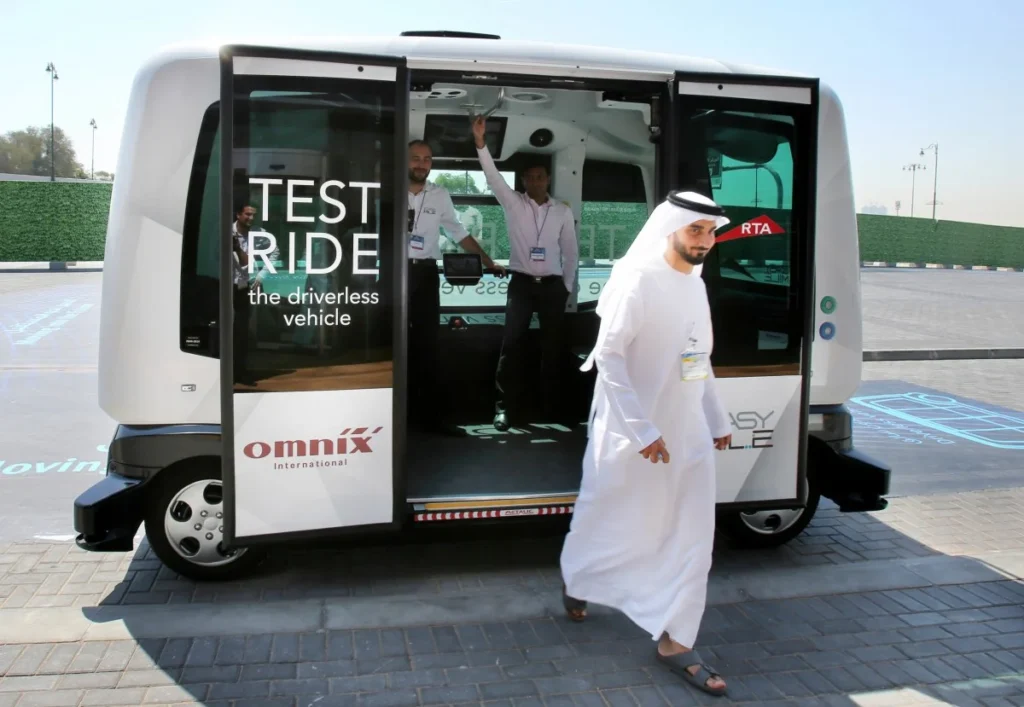Dubai has taken a major step into the future of public transportation. The Roads and Transport Authority (RTA) has officially launched a pilot test of its first driverless tram. The test is currently running at Dubai Silicon Oasis, a modern tech hub in the city.
This new tram uses the latest smart technology, including advanced sensors and AI systems, to safely move without a human driver. The tram can detect obstacles, follow signals, and stop or slow down automatically to avoid any collisions. This exciting project is part of Dubai’s larger goal of becoming a world leader in smart, sustainable mobility.
A Glimpse Into The Future
The RTA’s driverless tram is not just an idea or a concept anymore – it’s now running in real time as part of a test phase. It’s powered by electric energy and designed to move smoothly through urban areas while remaining quiet and eco-friendly.

At Dubai Silicon Oasis, the tram is being tested on a 600-metre track. The tram can carry up to 56 passengers and includes modern safety features. It is equipped with collision-avoidance sensors, cameras, and navigation software that help it move safely through its route.
This isn’t just about technology for show – it’s about real-world use. The RTA is checking how this tram performs in different weather and lighting conditions, and how it reacts to people or objects in its path.
Why A Driverless Tram?

Dubai is growing fast, and with that growth comes more traffic and more need for efficient public transport. By adding autonomous trams, the city hopes to ease road congestion and offer a smart alternative to private cars.
According to the RTA, driverless technology can make public transport safer and more reliable. There’s less chance of human error, and the system can be adjusted instantly in real time to avoid delays or problems on the track.
Plus, driverless trams are good for the environment. Since they run on electricity, they reduce carbon emissions and help Dubai move closer to its green energy goals.
A Part Of Dubai’s Bigger Vision
This pilot is not a one-off experiment. It’s actually part of a long-term transportation plan launched by the Dubai government. The goal? To have 25% of all transportation in Dubai become autonomous by 2030.
This includes everything from taxis and buses to delivery robots and even flying taxis. The driverless tram is a key part of that plan – helping Dubai test what works best and how to make the technology available citywide in the coming years.
So far, the RTA has already rolled out smart buses, self-driving delivery vehicles, and electric abras (boats). The tram adds to this list and shows just how serious Dubai is about changing the way people move around the city.
What Makes This Tram Special?

What sets this driverless tram apart from others in the world is its mix of technology and design. It has a built-in system that communicates with traffic lights and other vehicles on the road. That means it can “talk” to the environment and adjust its movement as needed.
There’s no driver on board, but the tram is not alone – it’s constantly monitored by a central control room. If anything unusual happens, the team can quickly step in and guide the tram remotely.
Also, passengers inside the tram can feel at ease. The ride is smooth, quiet, and safe. There are emergency buttons, CCTV cameras, and real-time updates to inform people about the journey. It’s all designed to build trust and comfort for passengers trying this new mode of transport.
What’s Next?
The RTA says this pilot is just the start. Over the next few months, the team will collect feedback from passengers, monitor performance data, and fix any issues that come up.
If the trial goes well, we can expect to see more driverless trams rolled out in other parts of Dubai – especially in busy areas like Downtown, Business Bay, and Expo City.
In the long term, the RTA wants to link these autonomous systems with existing metro, bus, and taxi services. This would allow passengers to move smoothly from one system to another – all without needing to drive or wait long hours.
Residents Are Curious And Excited
People living and working in Dubai Silicon Oasis have already spotted the tram in action. Many are curious, while others are excited to try something so futuristic.
“I think it’s amazing that we can travel without a driver now,” said a tech worker in the area. “Dubai is really leading the way with innovation. I can’t wait to take a ride.”
Others see it as a step toward better city planning. With fewer cars and more smart trams, Dubai can become a more walkable, less polluted place to live.
Challenges Ahead
Of course, no new technology comes without challenges. The tram must prove that it can handle real-life traffic – pedestrians, sudden stops, changing weather, and even unusual situations.
Cybersecurity is another area of focus. Since the tram runs on software, it’s important to protect it from hacking or data theft. The RTA has confirmed that strict safety standards and encrypted systems are in place to manage these risks.
And while the idea of driverless transport sounds fun, it also raises questions about jobs. What will happen to tram operators or other support roles? The RTA says it will work on reskilling and training programs to help workers move into new jobs related to smart transport.
Dubai Leading The Way
With this driverless tram, Dubai proves once again that it’s not afraid to lead the way in adopting new technology. From flying taxis to AI-powered metro systems, the city is actively building a smart, connected future for its residents.
The test at Dubai Silicon Oasis is only the beginning. As the city learns and improves, it could set a model for other cities in the region and beyond.
Also read: Rashid Hospital Launches New Mindfulness Wing for Patient Recovery













